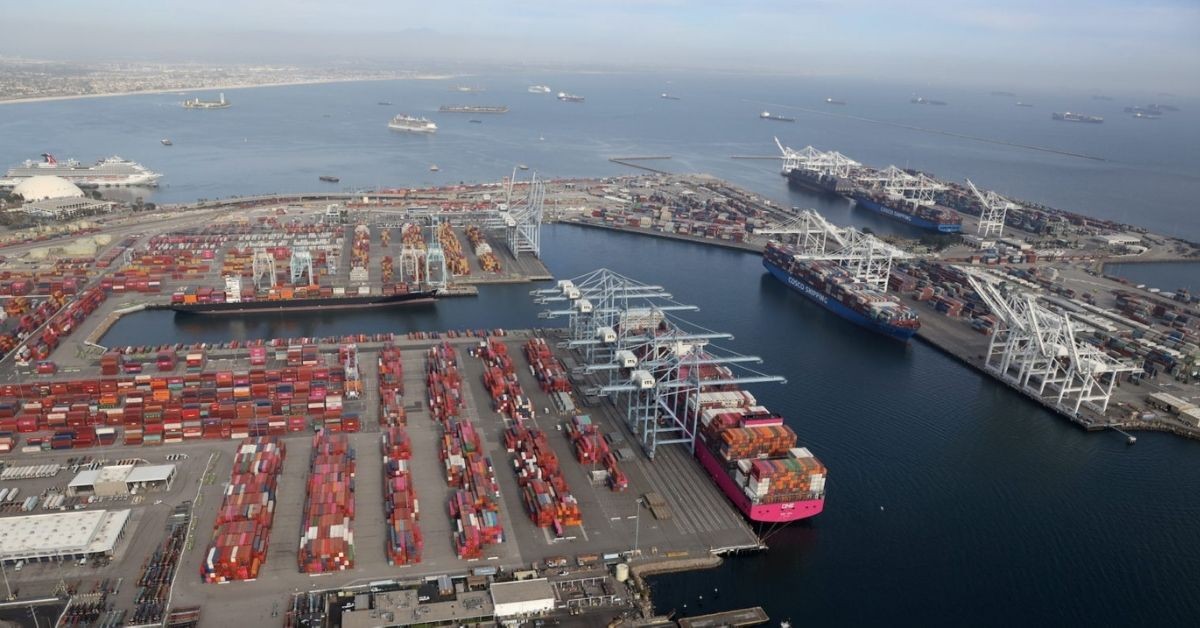After three months of stable Freight All Kinds rates on the trans-Pacific eastbound route, ocean carriers took June 1 increases of $600 to $700 per 40-foot-equivalent unit out of North Asia, depending on shipowner and booking destination, sources say.
Major ocean carriers filed for a $1,000 to $1,200 GRI June 1, FMC filings showed. Carriers announce GRIs up to a month before they are due to come into force, during which time they also have the option to lower or postpone the proposed GRI or decide against implementing an increase at all, depending on the development of market conditions.
There is frequently a period of negotiation between carriers and freight forwarders or shippers ahead of the implementation date, where the two parties try and reach an agreeable level, which is sometimes shy of the initial proposed rate hike.
But even when not bringing GRI’s into force, carriers can still levy Peak Season Surcharges and cargo premiums, forcing shippers to spend more per container shipped.
Platts Container Rate 13 – North Asia to West Coast North America – was assessed June 1 at $5,500/FEU, up $700 on the week, and the highest assessed rate since S&P Global Platts launched the assessment in 2017.
At the same time, ex-Asian cargo bound for the USEC was assessed June 1 at $6,800/FEU, a $600 increase on the week, and $400 above the Jan. 11, 2020, record high of $6,400/FEU.
And rates could see further hikes as the market looks toward the peak shipping season, which historically begins in July.
“By all expectations and from what we’re hearing from carriers, we need to hold on because this will last into Lunar New Year 2022,” a US-based freight forwarder said. “Carrier forecasts still far exceeds capacity in [the] market,” the source added. “Peak season surcharges were always mitigated in years past, similar to GRIs, but now we’ve never seen these types of increases.”
Stable rate period over
In the first four months of the year, trans-Pacific rates were largely stable as unseasonal demand strength supported market activity, and ocean carriers avoided taking general rate increases, opting instead to promote premium booking services for equipment and on-time arrival guarantees.
From Jan. 28 to April 28, trans-Pacific headhaul rates held firm, albeit at significantly elevated levels compared with past years.
In the three-month period to April 28, rates to the US Atlantic Coast were rangebound within a $100 spread. On PCR5 – North Asia-to-East Coast North America – the highest price was registered on March 5 when USEC imports were assessed at $5,300/FEU, while the lowest assessment was on April 19 at $5,200/FEU.
During the same timeframe, freight rates for US Pacific coast imports stayed within a $250 spread, maintaining an average of $4,110/FEU during the period.
But carriers have begun to file larger GRIs and enforce peak season surcharges as a red-hot import level leaves shippers vying for boxes.
“The market continues to heat up even further as demand remains strong and blank sailings remove capacity across all TPEB lanes,” said Flexport, a US-based freight forwarding company. “COVID outbreaks at origin (notably at the port of Yantian and countrywide lockdown in Malaysia) likely to result in vessel diversions, further blank sailings and upward pressure on rates.”
German carrier Hapag-Lloyd said May 14 it had filed an eastbound trans-Pacific GRI of $3,000/FEU for June 15 enforcement.
Global container index
And elevated rate elements have not been isolated to the trans-Pacific market. The Platts Container Freight Index, a weighted average of Platts’ assessed routes, has registered large increases since freight rates began to climb in June 2020.
The index was assessed June 1 at $5,559.82/FEU, up more than 385% year on the year and an all-time high, as global freight rates tracked higher.
“I know rates and delays are going to increase,” a shipper source said. “I don’t see demand on a downward swing.”
Source : SP Global







